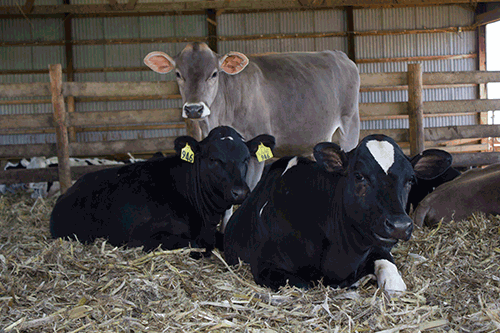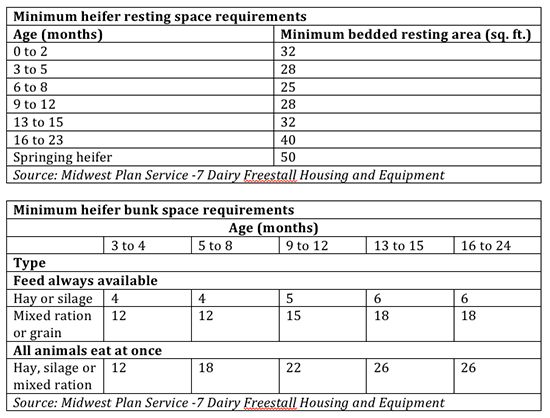
If the time has come to build a new heifer facility on your farm, it is wise to do your homework before the construction crew moves in. One major decision is how big the building should be.
"Know where you've been in terms of heifer herd size," said Becky Brotzman, D.V.M., with the University of Wisconsin School of Veterinary Medicine, during a Professional Dairy Producers of Wisconsin Calf Care Connection workshop. She advised farms to first determine their average and 80th percentile heifer calf delivery rate per year and by month.
Several sources can be used to find these numbers, Brotzman said. They can come from your Dairy Comp 305 Calf Table, a Dairy Comp 305 Inventory List by Age, or by evaluating other written records from the farm. "Take a full look at the hills and valleys," she advised.
Next, decide where your farm is going. Do you want to stay the same size or expand the herd? Then, you can use one of two metrics to estimate housing needs:
80th percentile of the average calving rate or 30 percent above the average calving rate.
"People normally want to build for their average calving rate, but where do the extras go?" Brotzman said. "That is what I am trying to accommodate."
"Design for those hard, busy times," she said. "And in the times when calving is not as heavy, it is an opportunity to not fill barns quite as full." Often farms don't want to see pens stand empty, but leaving pens unoccupied allows dry out to occur and can kill many bacteria pathogens, Brotzman said.
"The harsh reality is that stocking density if self-corrected," she noted. If pens are constantly overcrowded, heifer health will likely suffer. To give your calves and heifers the space they need, consider the resting space and bunk space recommendations listed in the table below.

In addition to adequate space, Brotzman emphasized the importance of proper ventilation, lighting, resting surfaces and heat abatement. She also urged farms to consider the working environment for the people. "Put things in place that make it easy and safe to accomplish heifer tasks," she said.
Calf and heifer housing resources, including a heifer facility needs calculator, can be found on the Dairyland Initiative webpage. With financial support from industry sponsors, the Dairyland Initiative resources are available to all U.S. dairy producers free of charge.

The author is an associate editor and covers animal health, dairy housing and equipment, and nutrient management. She grew up on a dairy farm near Plymouth, Wis., and previously served as a University of Wisconsin agricultural extension agent. She received a master's degree from North Carolina State University and a bachelor's from University of Wisconsin-Madison.








